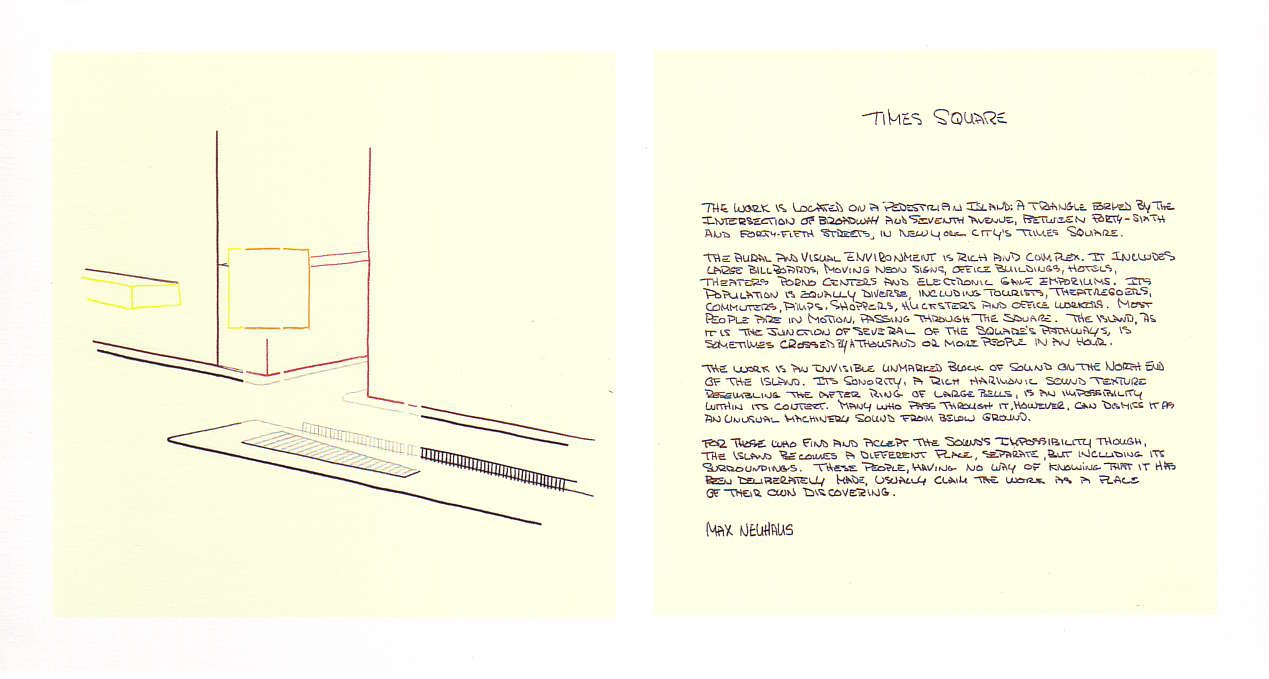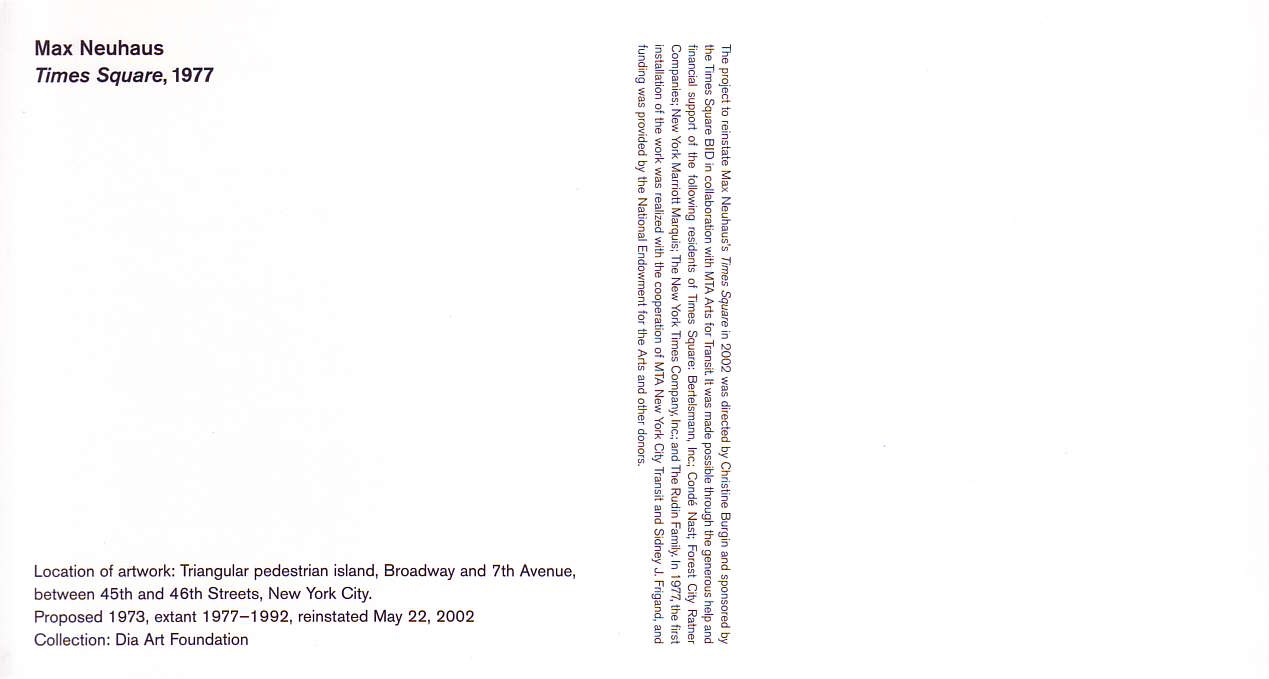2002
Times Square 1977
Sound Work Location: Pedestrian island between 46th and 45th Streets, New York City, 1977 Dimensions: triangle 6 x 12 meters
- the Sound Work remains until 1992, to be reinstalled in 2002 as a permanent piece in the Collection of Dia Art Foundation.
Max Neuhaus’s Times Square is a rich harmonic sound texture emerging from the north end of the triangular pedestrian island located at Broadway between 45th and 46th Streets in New York City.
Originally installed at this site from 1977 to 1992, the Times Square Street Business Improvement District (BID), and Christine Burgin collaborated with MTA Arts for Transit and Dia to reinstate the project in May of 2002.
Visitors and residents in Times Square may experience the artwork 24 hours a day, seven days a week.



